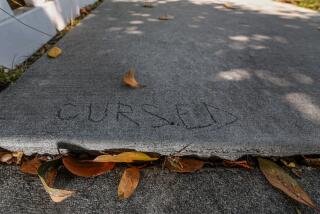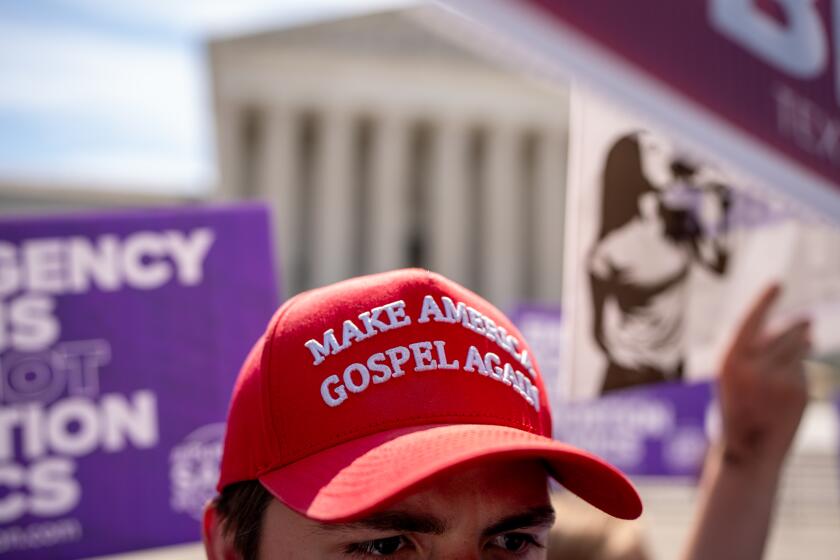The 2nd Street tunnel’s frustrating bike lanes
It’s been three months now since the city of Los Angeles, in its wisdom, slapped down the new, controversial bicycle lanes in the 2nd Street tunnel. Where there used to be four lanes of car traffic moving smoothly in both directions, there are now only two, plus a bike lane on either side. This is part of the city’s ongoing efforts to make Los Angeles more bike-friendly. At the moment, there are about 350 miles of bike lanes in the city, among some 6,500 miles of streets.
So how’s it working out? “I want to bash in the idiot’s head who made these insufferable lanes possible,” wrote one commenter on the Streetsblog website. And a typical response from a cyclist: “Sorry you will have a slower drive. But I will get to survive.”
I am both a cyclist and a driver, and I travel regularly through the 2nd Street tunnel in both capacities. I have always considered myself a strong supporter of bike lanes — who could object to a bike-friendly city? — but this is the first time I’ve been forced to face the stark realities of the trade-off. Since the bike lanes were put in (running along 2nd Street from Spring Street to Glendale Boulevard), the westbound trip through the tunnel — the one I’ve made almost every evening for 10 years — has gone from a minute or two at most to … well, as much as five or six minutes. That may not sound like much, but let’s be clear: It’s just a 1,500-foot tunnel. It’s dark in there, and it feels distinctly earthquake-unfriendly. And to my endless irritation, I rarely see a bike pass by while I wait.
VIDEO: Do you drive in L.A.? Watch this to see what scares cyclists.
Like many of my fellow motorists sitting there with nothing to do, I began wondering how the city had made the decision to cut back the car lanes in this particular tunnel, and whether it had done any studies or had considered at all what the negative effects would be. After a couple of months of stewing, I gave a call to Tim Fremaux, a transportation engineer with the city’s Department of Transportation.
According to Fremaux, 2nd Street had been identified in the city’s official bike plan, adopted by the City Council in 2011, as a candidate for bike lanes after careful consideration of geography and topography and much thought about how to create a seamless bicycle connection between downtown and the rest of the city. When DOT was ready to begin moving on that recommendation, a study was done — a “thorough analysis,” Fremaux said, of what the pre- and post- effects would be on traffic. There was a public hearing at which the data were released. The ultimate decision to move forward was made by the City Council.
That’s all well and good, I said, but in your quest for bike friendliness, you made life a lot worse for drivers, didn’t you? Was it worth it?
Said Fremaux: “What we did was to rebalance the street for a mode of transportation that previously wasn’t given space. Of course there are always going to be trade-offs in a built-out city when we have to sacrifice some space to give bicycles the ability to move more smoothly. The question is whether there are overriding benefits. And remember, it’s not just to create space for existing bicyclists but also to encourage future ones.”
VIDEO: Do you bike in L.A.? Watch this to see what concerns all those drivers.
According to the city, it had long been dangerous to cycle through the tunnel because of bad lighting and “high vehicle speeds.” In fact, one of the ancillary benefits of the new bike lanes, city officials say, is that they slow down drivers and are expected to reduce accidents. I hadn’t realized (as a driver) that slowing down cars was a positive thing, but apparently it is.
I asked Fremaux whether there were any rules of thumb for figuring out how much helping cyclists would harm drivers. Is there a number that can be put on the trade-off?
And apparently there is. Data tell us, he said, that a traffic lane in an urban environment can accommodate about 800 vehicles per hour before it begins to experience delay. In other words, if you go down to one lane from two, you won’t feel any additional delay unless that one lane is expected to carry more than 800 cars per hour. For the most part, bike lanes have been put on streets that do not exceed the threshold, or not by very much.
FULL COVERAGE: Sharing the road in L.A.
“We do a robust software simulation before we put in a bike lane,” Fremaux said, “using the number of vehicles we’ve obtained from a traffic count on a weekday. We run simulations for pre- and post-project to calculate the amount of delay before and after in seconds. We compare the two.”
He also noted that although there can be an immediate negative impact on automobile traffic after a bike lane is put in, some of that impact is reduced over time as some drivers change their routes and others choose to travel by other means, including public transportation and, of course, bicycles.
Sounds right to me: In fact, for the last two weeks, I haven’t gone through the tunnel once. I’ve diverted to 1st Street.
Inevitably, with change like this, not everyone is going to be happy. To be clear: I wasn’t happy. And the city understood from the outset that its decision would generate some complaints and some slowdown; Fremaux said the delays for motorists are at just about the level that had been predicted.
So did the city make the right choice? Even after my discussion with Fremaux, I couldn’t be certain. Was 2nd Street really the best place for bike lanes, rather than 3rd or 8th or some other street? I don’t know. But what is clear is that the city, to its credit, is thinking about these issues and doing its best to make rational, data-based decisions as it moves to make Los Angeles more bike-friendly.
Maybe that’ll give you some comfort as you sit in the tunnel each night.
ALSO:
Can car-happy L.A. learn to share the road?
Who should foot the bill for L.A.’s sidewalk repairs?
If California splits into six states, NorCal could be Cannabis Island
This post is part of an ongoing conversation to explore how the city’s cyclists, drivers and pedestrians share and compete for road space, and to consider policy choices that keep people safe and traffic flowing. For more: latimes.com/roadshare and #roadshareLA.
More to Read
A cure for the common opinion
Get thought-provoking perspectives with our weekly newsletter.
You may occasionally receive promotional content from the Los Angeles Times.











